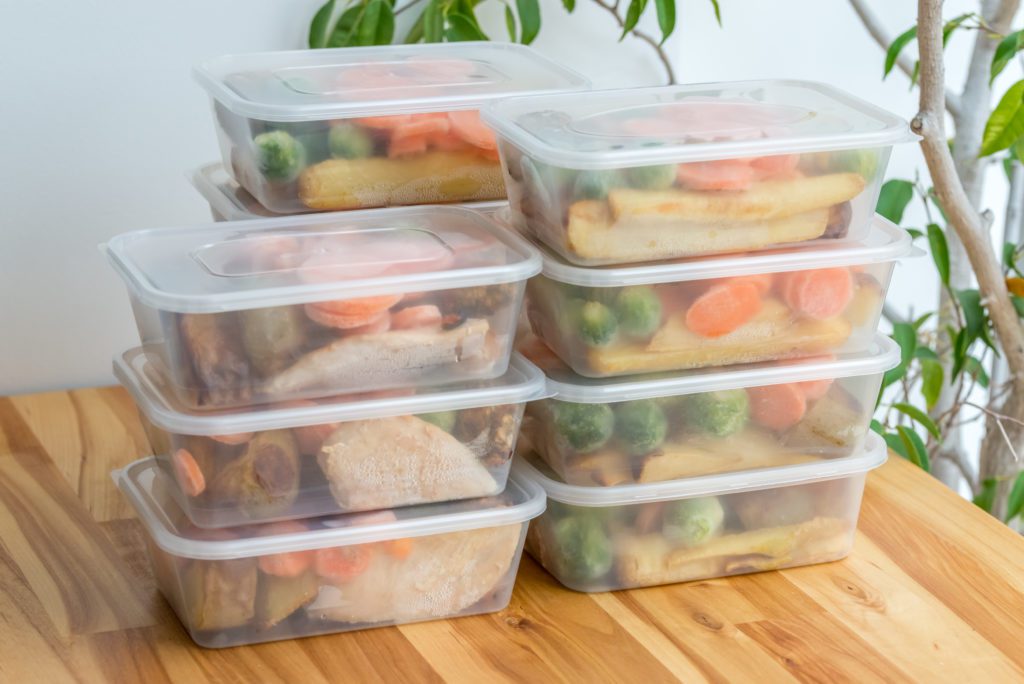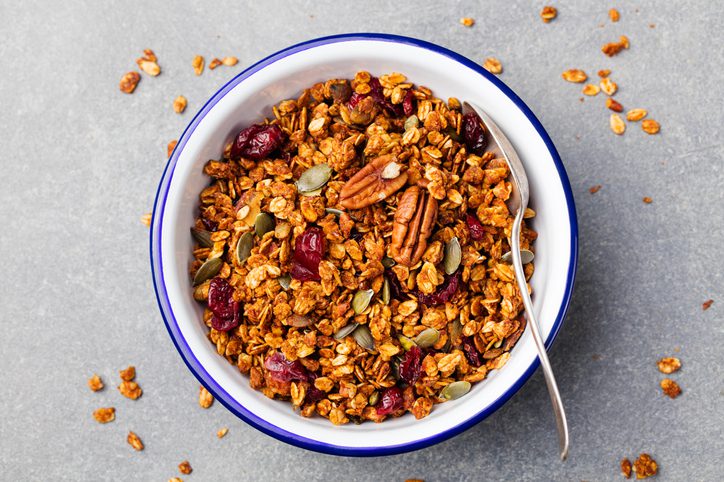No one needs to tell an age group triathlete that life gets busy. Some might say we live for that. Just because life gets busy, doesn’t mean you need to sacrifice your well-being. It’s often during these high-stress times that we fall victim to illness, injury or a lack of productivity at work and in our family lives.
One of the easiest ways to keep your energy up and staying engaged throughout the day is by dialling in your nutrition. Registered dietitian and sports nutritionist for Athletics Canada and the Toronto Raptors, Jennifer Sygo says that keeping it simple is the key. “Make sure you have plenty of reusable containers and develop a system that you can repeat week after week, even when you’re tired and not in the mood.”
Establishing a meal preparation routine is essential to fueling yourself with highly nutritious food products, instead of succumbing to order take-out or bingeing on sugar-packed granola bars. Once you have an established routine or plan, make sure to give yourself lots of variety. “Using interchangeable components makes it easy,” says Sygo. “For example, you might take two fruits each day, but you can mix up the type, or you might make a salad, but vary the protein, type of greens, or the type of fat you top it with each day.” Some may enjoy eating a similar lunch throughout the week, while others enjoy a bit more variety. For those that want to surprise the taste buds more often, Sygo suggests rotating through two to three typical lunches.
The best protocol to meal planning
“Above all, I strongly recommend making as much of your lunch at night whenever possible – we all believe we’re going to have more time in the morning than we actually do,” says Sygo. Even better than prepping your lunch for the next day the night before is making a plan prior to the beginning of the week. “I encourage my clients to take some time on the weekend to map out the schedule for the next week, including work, personal and professional responsibilities, and, of course, training sessions. ” From there, make sure you build a tentative menu plan for meals and snacks. “If the week looks super busy, it might make sense to meal prep ahead on the weekend and focus on make-ahead meals, like soups, chili, or slow-cooker meals; on the other hand, if there is a bit more time in the evening, then fresh-made meals can be a good option.”
By having a rough outline, you’re able to grocery shop with a purpose, reduce stress, save money and make sure you’re getting variety in your diet.
What goes into your lunch?
Don’t skip on the carbs. “One of the biggest mistakes I see in training these days is a fear of adding carbs to the diet because of their fear of weight gain,” says Sygo. “In general, the harder and the more intense the training, the greater your carbohydrate needs are.”
When it comes to assigning specific values, we all need different levels of carbs, proteins and fats depending on our training, preferences (to be enjoyed) and the demands at work. “But roughly speaking, if your plate is about 1/4 to 1/3 protein (meat, eggs, tofu, beans, etc.), 1/4 to 1/2 carbs (the high end would be for the heaviest 2-a-day training blocks), and 1/4 to 1/2 vegetables, you should be okay.”
Don’t forget snacks!
We’ve all been there. It’s 2:30 in the afternoon, you finished your lunch at 12:30 and you’re already hungry. Planning snacks is just as important as lunches, says Sygo. “‘Pulsing’ the body with some carbohydrates and protein every three to four hours helps with recovery and controlling your appetite.”
Some quick and easy snack ideas that include both carbs and protein could be Greek yogurt with berries and granola, nut butter with a banana, hummus with crackers and veggies, or a couple of no-bake energy bites, made with nut butter, dates, and cocoa.
Take care of yourself
All the training in the world means very little if you don’t take care of the other aspects of life – managing your sleep, making sure you stay active throughout the day and balancing the demands and pleasures of life.
Over the past few years, corporations like Raymond James have started implementing self-care campaigns and policies for their employees. The Raymond James Life Well Lived program was developed by Jamie Coulter, SVP, Branch Manager, Private Client Group, who had observed that his financial advisors were so swamped with work that they were struggling to schedule active time into their day. “Life Well Lived is an opportunity for our staff to focus on themselves for four months,” says Coulter. “And perhaps get exposed to some different thinking on fitness, or nutrition, or mindfulness, and build from there.”
As part of the four-month program which began in April and ends in late July, employees took part in fitness assessments and group training sessions at the Toronto Athletic Club, lunch ‘n learn guest speakers who share their expertise, as well as social, sport and group events to help facilitate and inspire new healthy work-life balance habits in their company. Not to mention a paddleboarding expedition with Olympic gold medalist Simon Whitfield.

“I feel proud, and I love being affiliated with a company that puts this much time into a healthy lifestyle and who cares about its employees,” says Stephanie Petsis, an Administrative Assistant at the company. “It’s one of the reasons why I love working for Raymond James.” Earlier in 2019, all of the good work Raymond James has been undertaking was acknowledged as the company won a Globe and Mail / Morneau Shepell “Employee Recommended Workplace Award”. Raymond James’ award-winning program ends with some big milestones – the TTF Indoor Triathlon in April, Ride to Conquer Cancer in June and culminates at the Toronto Triathlon Festival in July.

In this day and age, a majority of people spend their waking hours at work, so it’s important for employees and employers to create a culture of healthy active living. “The initiatives could be large or small – it could mean providing bike racks outside the building, providing healthy options in the lunchroom or cafeteria, encouraging training groups that provide a social element to exercise, or supporting corporate wellness initiatives and programs – the possibilities are virtually endless, and don’t need to be costly or complicated,” says Sygo.
Taking the first step of planning meals is a good start to keeping you topped up and ready to take on work’s tasks, training and the surprises that life likes to throw at us.



